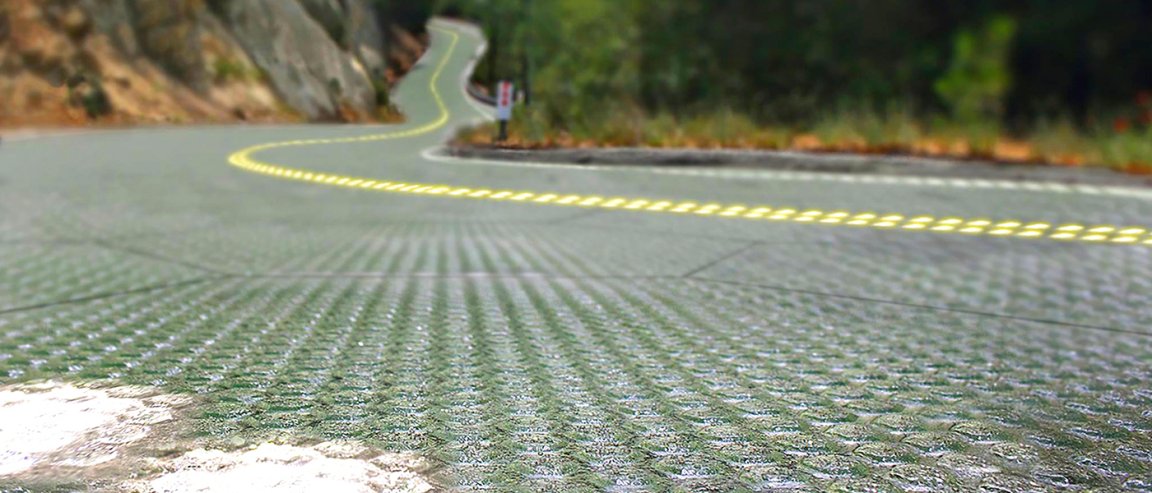
Historical Route to the Future
Solar Roadways has ambitious plans to turn all of America’s roads a shade “greener.” The company is partnering with Missouri’s Department of Transportation to install a test version of the startup’s solar road tiles in a sidewalk at the Historic Route 66 Welcome Center in Conway.
The state will be installing Solar Roadway’s unique brand of tiles that combine a solar cell with LED lighting, a heating element, and tempered glass. Tiles are strong enough to support the weight of a semi, can illuminate roads, and make them safer in dangerous weather. All of this is possible while also feeding the electrical grid.

Officials plan for testing to begin at the end of the year. It is part of Missouri’s “Road to Tomorrow” initiative, which focuses on improvements like smart highways and incorporating renewable energy. Funding for the project partially comes from crowdfunding sources. This is done to assuage any concern that these pilot projects will redirect funds from traditional transportation infrastructure.
The initiative’s director, Patrick McKenna, believes “together, we will find innovative and creative ways to fund transportation while ushering in the information age of transportation and creating economic prosperity for Missouri.”
Upping the Energy
Curbed reports Solar Roadway’s founders, Scott and Julie Brusaw, claim lining the country’s roads and parking lots with their product will produce three times the amount of energy that the U.S. consumes. In turn, this could also help to proliferate a trend toward more electric cars.
“If [Solar Roadway’s] version of the future is realistic, roadways can begin paying for themselves,” says Transportation Department’s Tom Blair. Even with all the excitement, Blair admits that all of these great hopes should be tempered since the final product is still a few years down the line.
Despite the excitement, some scientists continue to question the validity of solar roads. The project isn’t cheap. In fact, replacing all of the existing roads with solar-powered hexagons could cost upwards of one trillion dollars.
“There’s currently a virtually endless supply of places you could install solar panels that DON’T have cars driving over them and, as such, don’t require fancy high-tech glass covering them. Or, for that matter, don’t mean you have to worry about the long-term wear-and-tear of millions of tons of steel and rubber driving over them at high speed every year,” reads a 2014 blog post from Equities. The roadways could end up paying for themselves over time, but it would be a long time. Think decades.
In addition to not being overly sustainable, LED road lighting would most likely result in poor visibility. Essentially, unless the cost can be reduced, you won’t be seeing solar roadways (especially on a larger scale) in person anytime soon.